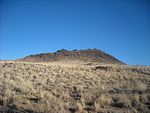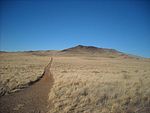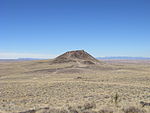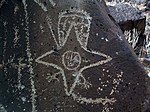West Mesa
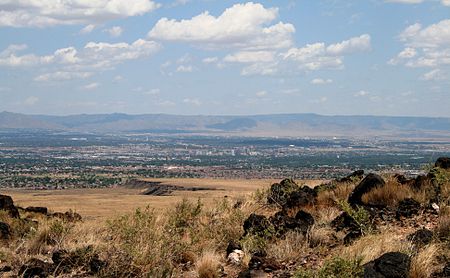
The West Mesa is an elevated landmass lying west of the Rio Grande in the Albuquerque area, stretching from the Pajarito Mesa in the South Valley northward to Bernalillo in the U.S. state of New Mexico. The eastern edge of the West Mesa is defined by an escarpment that borders the Rio Grande floodplain. The West Mesa also serves as the easternmost extent of the Colorado Plateau in this region. The western edge of the mesa is the Rio Puerco near the Laguna Pueblo about 20 miles (32 km) west of Albuquerque. A large portion of the West Mesa is part of Petroglyph National Monument and is bisected by Interstate 40 and Historic Route 66. Atrisco Vista (previously named Paseo del Volcan) (NM 347) runs north-south on the West Mesa, connecting I-40/US-66 to Double Eagle II Airport. There are numerous subdivisions with new homes being built on the lower portion of the West Mesa as the City of Albuquerque continues to expand further to the west. Further west on the mesa are the mobile home communities of Pajarito, located to the south of I-40, and Lost Horizon, located about 1/2 mile north of I-40 and 3 miles west of the Paseo del Volcan interchange. The Bernalillo County Correctional Facility, Cerro Colorado Landfill, and the Sandia Motor Speedway are located on the West Mesa, several miles south of Interstate 40. The National Weather Service operates a WSR-88D NEXRAD radar site on the West Mesa near Double Eagle II Airport.
Excerpt from the Wikipedia article West Mesa (License: CC BY-SA 3.0, Authors, Images).West Mesa
Atrisco Vista Boulevard Northwest, Albuquerque
Geographical coordinates (GPS) Address Nearby Places Show on map
Geographical coordinates (GPS)
| Latitude | Longitude |
|---|---|
| N 35.116666666667 ° | E -106.8 ° |
Address
Atrisco Vista Boulevard Northwest
Atrisco Vista Boulevard Northwest
Albuquerque
New Mexico, United States
Open on Google Maps

